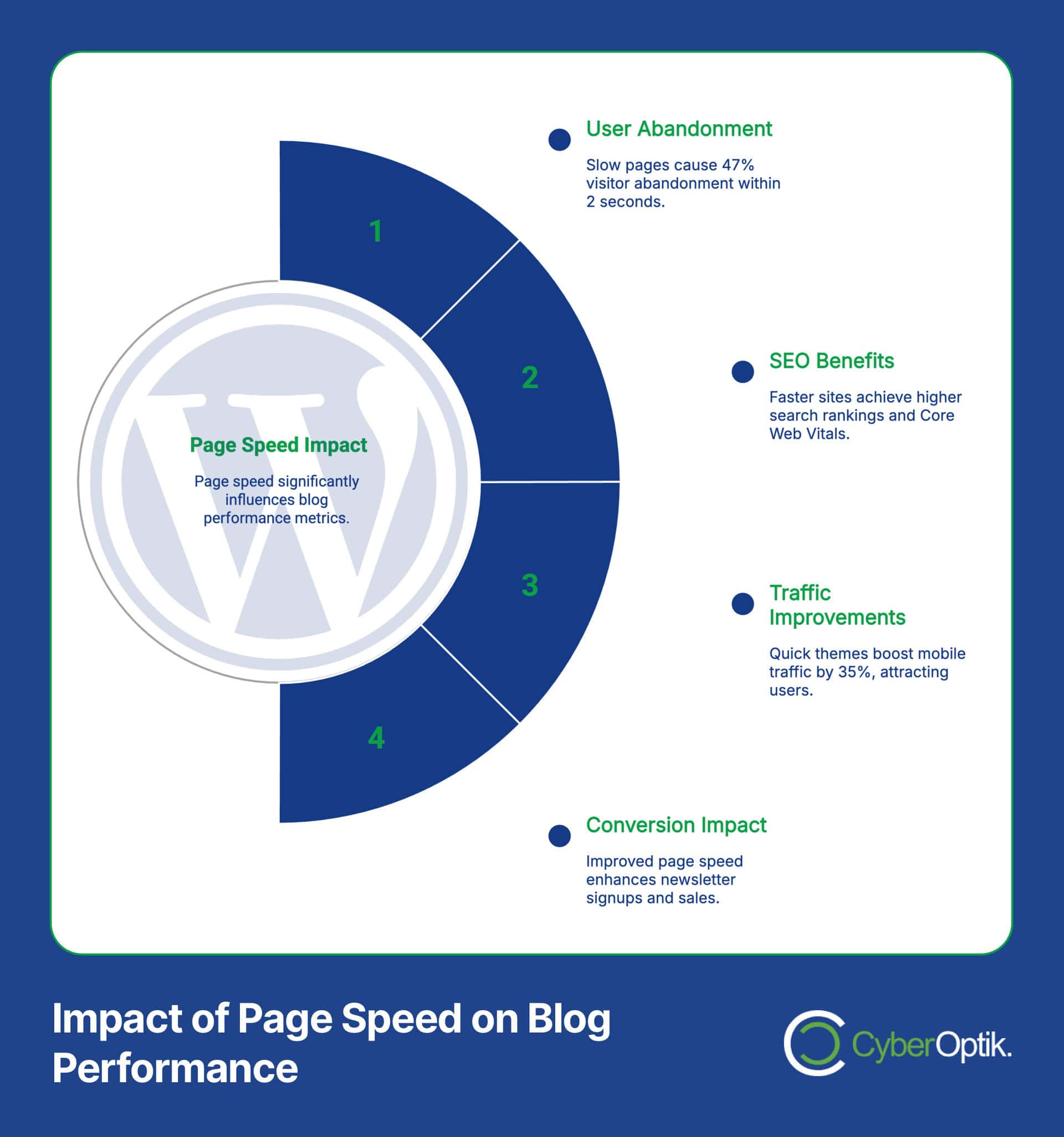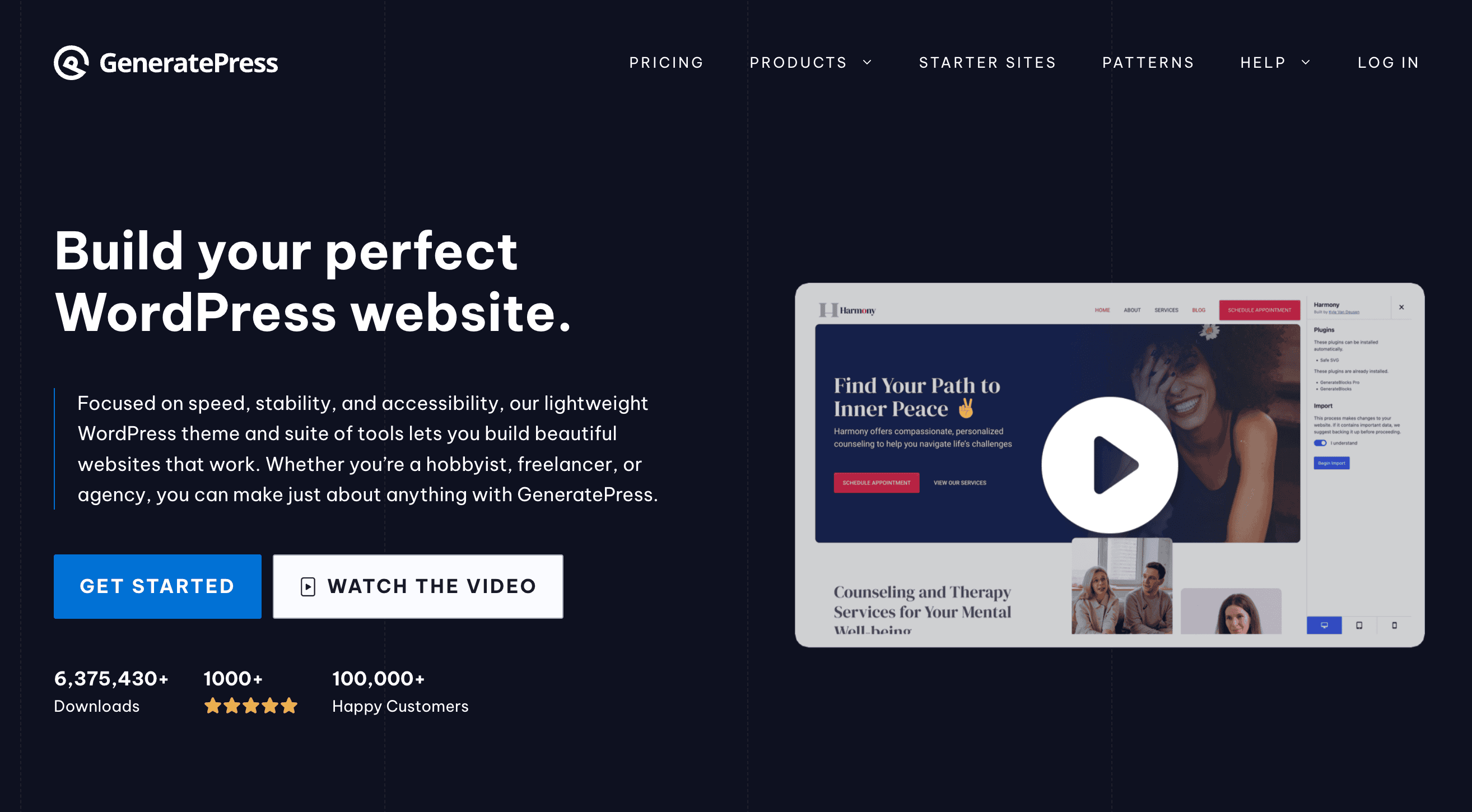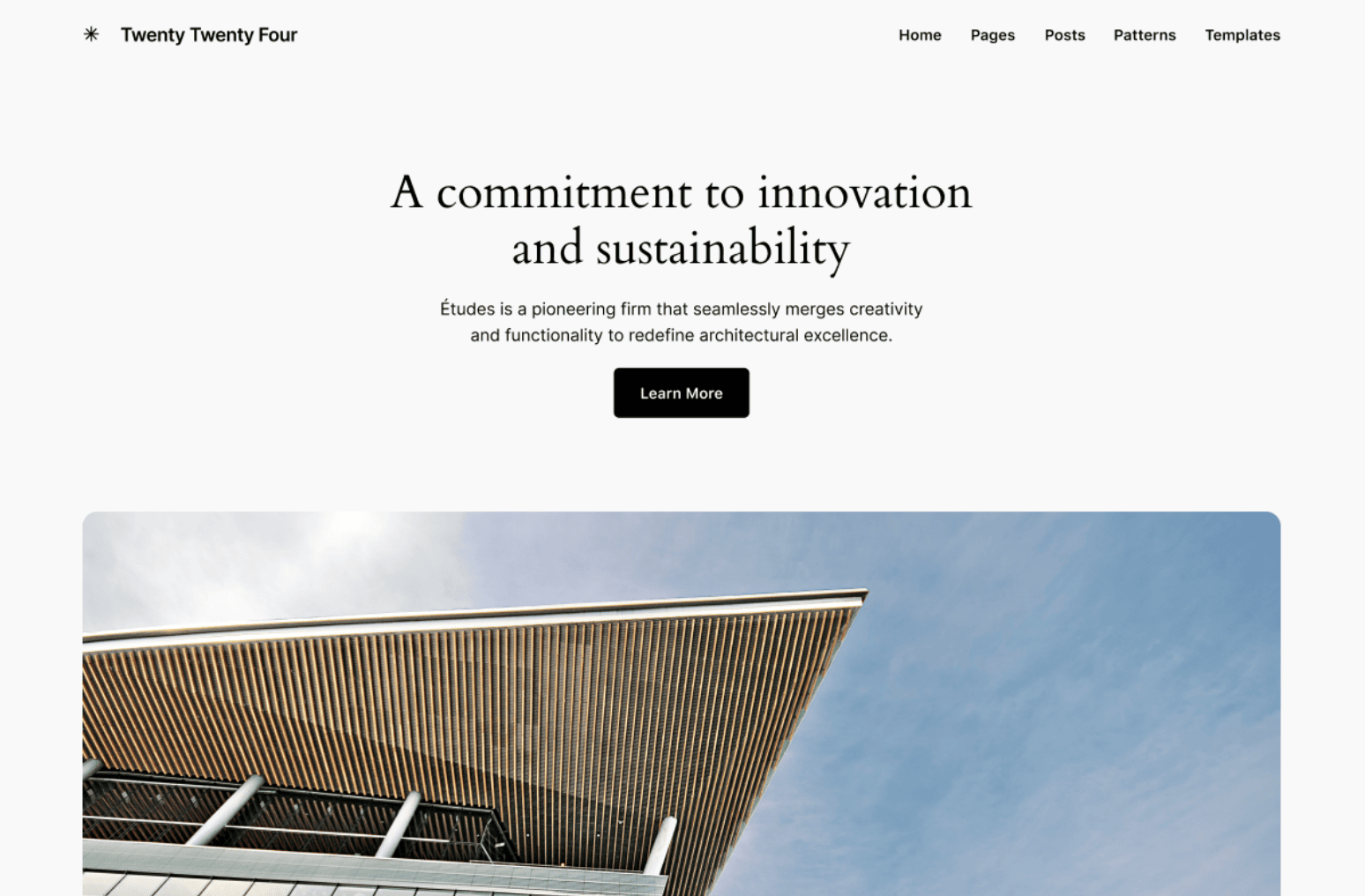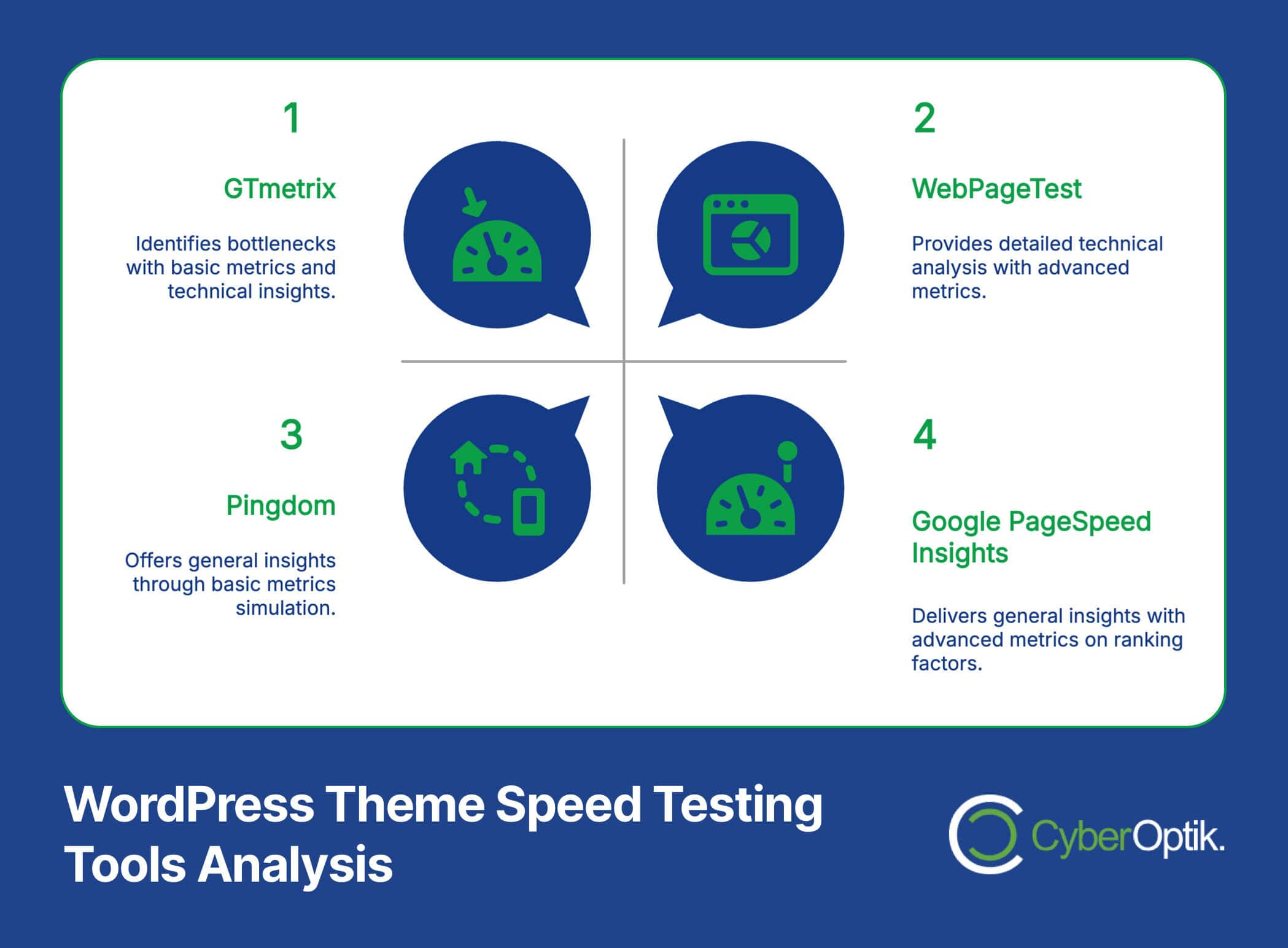Every millisecond counts when it comes to your blog’s success. Your WordPress theme choice directly impacts how quickly your content loads, affecting everything from user experience to search engine rankings. We’ve analyzed performance data across dozens of themes to identify the most speed-optimized options for bloggers.
The harsh reality? Nearly half of your potential readers (47%) will abandon your blog if it takes longer than 2 seconds to load. (Source: InstaWP) That’s a significant portion of your audience lost before they even read your first sentence. As a digital marketing agency that’s built hundreds of WordPress sites, we know that selecting the right foundation is crucial.
In this data-backed guide, we’ll examine the fastest WordPress themes specifically designed for blogging, compare their performance metrics, and help you make an informed choice that balances speed with the features your blog needs.
Why Speed Matters for Your WordPress Blog
Speed isn’t just a technical metric—it’s a critical factor that directly impacts your blog’s success. Fast-loading blogs create a positive first impression and keep visitors engaged with your content rather than waiting for pages to load.

The benefits of a speed-optimized WordPress theme extend beyond user experience. Blogs using optimized themes see a 35% increase in mobile traffic compared to those using slower alternatives. (Source: InstaWP) This significant traffic boost occurs because speed-optimized themes help satisfy Google’s Core Web Vitals requirements, which are now ranking factors.
Here’s why speed should be a top priority when selecting a WordPress theme for your blog:
| Speed Factor | Impact on Blog Performance | Why It Matters |
|---|---|---|
| Page Abandonment | 47% of visitors leave if pages take >2s to load | Directly impacts readership and audience growth |
| SEO Rankings | Core Web Vitals affect search position | Faster sites rank higher in search results |
| Mobile Experience | 35% more mobile traffic with fast themes | Mobile readers are particularly sensitive to speed |
| Conversion Rates | Improved for newsletter signups, product sales | Faster sites convert visitors more effectively |
These impacts aren’t theoretical—they translate directly to real-world results for bloggers. When we help clients transition from slow, bloated themes to speed-optimized alternatives, we consistently see improvements in engagement metrics like time on site and pages per session.
Key Factors That Make WordPress Themes Fast
What separates the speed champions from the laggards in the WordPress theme world? Several technical factors contribute to a theme’s performance profile.
The code foundation matters tremendously. Lightweight, well-structured code enables browsers to process and render your pages more efficiently. This is why many top-performing themes now advertise their coding standards as a key selling point.
Beyond the core code, these specific elements influence how quickly your WordPress blog will load:
Clean, Minimal Code Base
Fast themes avoid the “kitchen sink” approach. They don’t include dozens of unnecessary features that bloat the codebase. Instead, they focus on clean, minimal code that does exactly what’s needed without excess.
Premium themes increasingly prioritize speed optimization, with 50% of top premium themes now advertising performance as a primary benefit. (Source: InstaWP) This market shift reflects growing awareness of speed’s importance in the WordPress ecosystem.
Efficient CSS and JavaScript Handling
How a theme manages CSS and JavaScript files significantly impacts loading speed. The best themes for blogging implement:
- Code minification to reduce file sizes
- Selective loading of scripts only when needed
- Reduced dependency on external libraries
- Optimized asset delivery systems
Modern Loading Techniques
Speed-focused themes implement advanced loading techniques that prioritize what users see first. This includes:
Lazy loading images, which defers loading off-screen images until users scroll to them. This technique dramatically improves initial page load times, especially for image-heavy blog posts.
Critical path optimization ensures above-the-fold content appears quickly while less important elements load in the background. This creates the perception of speed even when the entire page is still loading.
Top 5 Speed-Optimized WordPress Themes for Blogging
After analyzing performance data across numerous WordPress themes, we’ve identified five standouts that deliver exceptional speed while maintaining the features bloggers need.
1. GeneratePress

GeneratePress consistently tops performance charts with its lightweight foundation and thoughtful optimization. The theme loads in just 1.576 seconds in testing environments, with impressive PageSpeed scores of 97/100 for desktop and 61/100 for mobile. (Source: Internet Folks)
What makes GeneratePress special for bloggers is its balance of speed with customization options. Despite its lightweight footprint (under 10KB), it offers extensive typography controls, layout options, and color settings that give blogs a unique identity without sacrificing performance.
GeneratePress particularly excels for blogs that need a clean, distraction-free reading experience with maximum speed. Its modular approach lets you activate only the features you need, preventing unnecessary code from loading.
2. Neve

Neve stands out with its perfect 100/100 PageSpeed scores on both mobile and desktop testing. With load times of just 1.4 seconds on GTmetrix and an even more impressive 974 milliseconds on Pingdom tests, it’s among the fastest themes available. (Source: WP Logout)
For bloggers, Neve offers a compelling combination of speed with modern design elements. Its starter templates specifically designed for blogs provide professional-looking layouts that maintain performance while delivering visual appeal.
Neve’s header and footer builder makes it easy to create custom navigation experiences without hiring a developer. This flexibility is particularly valuable for bloggers looking to highlight featured content or promote newsletter signups.
3. Astra

With over 1.8 million active installations, Astra is the most widely-used theme in our speed-optimized selection. It loads in 2.148 seconds in testing environments, making it slightly slower than our top two options but still well under the critical 3-second threshold. (Source: Internet Folks)
Astra’s popularity stems from its extensive ecosystem of starter templates and deep integration with page builders like Elementor. For bloggers who want to create more visually complex layouts while maintaining good performance, Astra offers an excellent middle ground.
The theme’s built-in blog layouts and typography options make it easy to create distinctive post designs without custom CSS. This accessibility makes it particularly suitable for bloggers who want design flexibility without coding knowledge.
4. Twenty Twenty-Four

As WordPress’s latest default theme, Twenty Twenty-Four delivers surprisingly good performance with a 2.033-second load time and a Largest Contentful Paint (LCP) of 2.466 seconds. (Source: Internet Folks)
The advantage of using WordPress’s default theme is guaranteed compatibility with core updates and wide plugin support. For bloggers who prioritize long-term stability and maintenance simplicity, Twenty Twenty-Four offers a solid speed-conscious option without any cost.
Its block-focused design approach works particularly well for bloggers who enjoy using the WordPress block editor (Gutenberg). The theme leverages the latest WordPress features to create flexible layouts while maintaining clean code.
5. Kadence

Kadence rounds out our top five with a 2.6-second load time and respectable 88/100 mobile PageSpeed score. (Source: WP Review Tips) While slightly slower than our other recommendations, it compensates with extensive customization options.
For bloggers who need advanced header and footer controls, Kadence’s built-in builders offer exceptional flexibility. The theme allows creating complex multi-column layouts, sticky headers, and custom mobile navigation without additional plugins.
Kadence’s performance remains impressive considering its feature set, making it ideal for blogs that need both speed and advanced design capabilities.
Speed Performance Comparison
To help you visualize how these themes compare in real-world performance, we’ve compiled their key speed metrics in a comprehensive comparison table. This data helps identify which theme might be best suited for your specific blogging needs.
| Theme | Load Time | PageSpeed (Desktop) | PageSpeed (Mobile) | LCP Time | Best For |
|---|---|---|---|---|---|
| GeneratePress | 1.576s | 97/100 | 61/100 | ~2.1s | Maximum speed with customization |
| Neve | 1.4s | 100/100 | 100/100 | ~1.6s | Perfect PageSpeed scores |
| Astra | 2.148s | 94/100 | 65/100 | ~2.3s | Builder compatibility with good speed |
| Twenty Twenty-Four | 2.033s | 92/100 | 59/100 | 2.466s | Free option with good performance |
| Kadence | 2.6s | 95/100 | 88/100 | ~2.7s | Advanced design with decent speed |
This performance data demonstrates the significant variation even among top-performing themes. Your selection should balance these metrics with your specific feature requirements and budget constraints.
How to Test Your WordPress Theme’s Speed
Selecting a theme based on reported metrics is a good start, but how your theme performs on your specific site with your content and plugins is what ultimately matters. Testing your WordPress theme’s speed should be both an initial selection criteria and an ongoing monitoring practice.
Professional WordPress developers rely on several trusted tools to measure theme performance. The research for our recommendations incorporated data from both GTmetrix and Pingdom, two industry-standard testing platforms. (Source: WP Logout)

Key Testing Tools for WordPress Theme Speed
When evaluating a WordPress theme’s performance, these tools provide the most reliable data:
| Testing Tool | What It Measures | Why It's Valuable |
|---|---|---|
| Google PageSpeed Insights | Core Web Vitals, optimization opportunities | Direct insight into Google's ranking factors |
| GTmetrix | Detailed performance breakdown, waterfall chart | Identifies specific bottlenecks in loading sequence |
| Pingdom | Load time, page size, request count | Simulates real user experience from multiple locations |
| WebPageTest | Advanced metrics, mobile simulation | Detailed technical analysis for developers |
When testing WordPress themes, it’s essential to evaluate both homepage and single post performance. The single post test is particularly important for blogs since that’s where readers spend most of their time.
What Metrics Matter Most
Focus on these key performance indicators when testing your WordPress theme:
- Largest Contentful Paint (LCP) – Measures when the largest content element becomes visible
- First Input Delay (FID) – Tracks how long until users can interact with the page
- Cumulative Layout Shift (CLS) – Measures visual stability (elements not jumping around)
- Total Blocking Time (TBT) – Shows how long the main thread is blocked
- Time to First Byte (TTFB) – Indicates server response time
Of these metrics, LCP is particularly important for blogs since it determines how quickly your main content becomes visible to readers. The best themes for blogging facilitate an LCP under 2.5 seconds, which meets Google’s recommended threshold.
Complementary Optimization Techniques
Even the fastest WordPress theme needs proper optimization support to reach its full performance potential. Your theme selection is just one component of a comprehensive speed strategy for your blog.
We consistently see that pairing a speed-optimized theme with the right website performance optimization techniques can dramatically enhance loading times. These complementary approaches work synergistically with fast themes to create an exceptional user experience.
Caching Solutions
Caching plugins create static HTML versions of your dynamic WordPress pages, eliminating the need to process PHP and query the database for each visitor. This optimization alone can slash load times.
WP Rocket stands out among caching solutions, reducing load times by up to 50% when paired with performance-focused themes. (Source: WP Review Tips) Its comprehensive approach addresses multiple performance factors simultaneously.
Image Optimization
Images typically comprise the largest portion of a blog post’s file size. Proper optimization is essential for maximizing theme performance.
Strategic image compression can reduce your page size by approximately 30% without noticeable quality loss. (Source: InstaWP) This significant reduction directly translates to faster loading times, especially for image-heavy blog posts.
For comprehensive image optimization, implement these techniques:
- Serve images in next-gen formats like WebP
- Enable lazy loading for below-fold images
- Use responsive images that adapt to screen sizes
- Optimize alt text for accessibility and SEO
Hosting Considerations
Your hosting environment plays a crucial role in how quickly your web pages load for visitors. Even the fastest theme can’t overcome the limitations of poor hosting.
For optimal WordPress blog performance, we recommend hosting solutions that offer:
| Hosting Feature | Performance Benefit | Impact on Blog Speed |
|---|---|---|
| WordPress-specific optimization | Server configured specifically for WordPress | Faster PHP processing and database queries |
| Server-level caching | Content cached at server level, reducing processing | Dramatically improved TTFB (Time to First Byte) |
| Global CDN integration | Content delivered from servers near visitors | Reduced latency for international audiences |
| HTTP/2 or HTTP/3 support | More efficient connection handling | Faster loading of multiple resources |
The hosting-theme relationship is bidirectional. Premium speed-optimized themes often include features that work best on quality hosting, while good hosting enhances the performance benefits of these themes.
Making the Final Choice: Speed vs. Features
Selecting the perfect WordPress theme for your blog requires balancing pure speed with the specific features your content strategy demands. This balance point varies depending on your blog’s unique requirements.
While 40% of premium themes now include built-in SEO features, these additions sometimes come at a performance cost. (Source: InstaWP) The ideal approach is to find a theme that delivers essential functionality without unnecessary bloat.
Beyond Speed: Other Factors to Consider
When evaluating WordPress themes for your blog, consider these additional factors alongside performance metrics:
- Design flexibility – How easily can you customize the theme to match your brand?
- Block editor compatibility – Does the theme support modern WordPress features?
- Typography options – Can you control fonts and text styling for readability?
- Schema markup support – Does the theme help with structured data implementation?
- Responsive behavior – How does the theme adapt to different screen sizes?
Theme Pricing Comparison
Cost is inevitably a factor in theme selection. Premium themes typically offer better performance optimization, but the investment must align with your blog’s needs and budget.
This pricing table breaks down what you can expect to pay for our recommended speed-optimized themes:
| Theme | Free Version | Premium Price | Sites Per License | Premium Features Worth Noting |
|---|---|---|---|---|
| GeneratePress | Yes | $59/year | 500 | Site Library, Elements, WooCommerce integration |
| Neve | Yes | $69/year | Unlimited | Blog Pro, white labeling, priority support |
| Astra | Yes | $49/year | Unlimited | Pro Starter Templates, advanced headers, blog layouts |
| Twenty Twenty-Four | Yes | N/A | Unlimited | N/A (Free WordPress default theme) |
| Kadence | Yes | $129/year | 500 | Hooked Elements, premium starter templates, WooCommerce |
When evaluating these costs, consider the long-term benefits of speed optimization for your site. Improved user experience and better search rankings often provide significant return on investment for premium theme purchases.
Our Recommendations for Different Blog Types
Based on our analysis, here are our specific recommendations for different blogging scenarios:
For new bloggers on a budget: Start with Twenty Twenty-Four. This free theme provides surprisingly good performance and serves as an excellent foundation while you build your audience.
For pure performance: Choose Neve if you want the absolute fastest load times and perfect PageSpeed scores out of the box.
For the best balance of speed and features: GeneratePress Premium offers exceptional performance while providing the customization options most bloggers need.
For visual blogs with many images: Astra’s image handling and gallery layouts make it ideal for photography, food, or travel blogs while maintaining good speed.
For blogs with advanced design requirements: Kadence provides the most design flexibility among our speed-optimized recommendations.
Frequently Asked Questions
Will changing my WordPress theme affect my SEO?
Yes, changing themes can impact SEO, particularly if your new theme handles URLs, headings, and schema differently. However, switching to a speed-optimized theme typically provides long-term SEO benefits through improved Core Web Vitals scores. To minimize disruption, back up your site completely before changing themes and check all redirects after installation.
Do I need to use the premium version of these themes?
While free versions of these themes are generally fast, premium versions often include additional performance optimizations and features that help further improve speed. The decision depends on your specific needs and budget. For professional blogs generating income, premium themes typically provide better ROI through enhanced user experience.
Can I make a slow theme faster with optimization plugins?
Optimization plugins can improve a slow theme’s performance, but they can’t completely overcome fundamental design issues. Starting with a speed-optimized theme and then enhancing it with performance plugins provides the best results. Think of it like upgrading a car—adding better fuel to an efficient engine works better than trying to make an inefficient engine perform well.
How often should I update my WordPress theme?
You should update your theme whenever security patches or compatibility updates are released. Most reputable theme developers release updates several times per year. Regular updates ensure your theme remains secure, compatible with the latest WordPress version, and optimized for performance.
Can I switch themes without losing my content?
Yes, your posts and pages remain in the WordPress database when changing themes. However, custom layouts, widgets, and theme-specific features might require reconfiguration after switching. Always back up your site before changing themes and test the switch on a staging environment first if possible.
Conclusion
The right WordPress theme forms the foundation of a successful blog, impacting not just how your content looks but how quickly it loads for readers. In a world where 47% of visitors abandon sites that load slowly, choosing a speed-optimized theme is no longer optional—it’s essential for blog growth.
Each of our recommended themes—GeneratePress, Neve, Astra, Twenty Twenty-Four, and Kadence—offers a unique balance of speed and features. Your specific choice should align with your blog’s content strategy, design requirements, and performance goals.
Remember that theme selection is just one component of website performance. For truly exceptional results, pair your speed-optimized theme with quality hosting, proper image optimization, and strategic caching implementation. This holistic approach will ensure your blog loads quickly across all devices, keeping readers engaged and improving your search visibility.
Ready to accelerate your WordPress blog? We help businesses implement comprehensive WordPress theme solutions that balance performance with functionality. Contact us today to discuss how we can optimize your blog for both readers and search engines.




